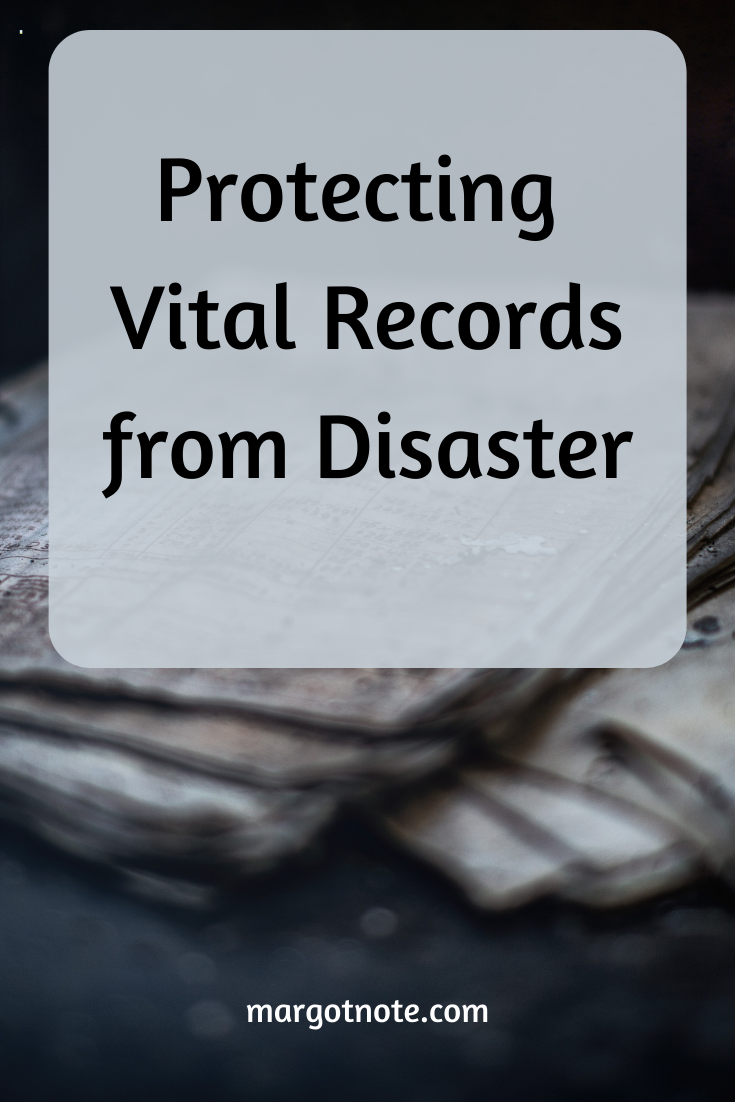Traditionally, vital records were the least interesting or desirable collection to steward in archives and records management. Vital records predated the digital era and their preservation began when information professionals microformed vital materials and stored them at a safe remote location.
Lessons Learned
Archivists may have organized and preserved vital records once, but the problem is that vital records are an ongoing issue, not a one-time situation. The events of 9/11, unfortunately, changed that perception for American archivists because the threat of sudden catastrophic loss became real. A newfound urgency was reinforced by Hurricane Katrina when the records of many organizations were destroyed due to flooding. More recently, new stories covered data loss either through natural disasters, accidental mishaps, theft, or malicious destruction. As a result, the protection of records has come to the attention of organizations large and small.
Timing is Everything
Vital records include continuity of operations records and rights records. Continuity of operations records should be covered as part of the process to return to daily operations as soon as possible. Rights records refer to those necessary to document and support the organization’s rights, its employees, and clients universally understood. There may be no need to access rights records immediately after a disaster. However, the organization will need them longer-term, and planning for their protection is an essential part of the vital records program. For example, records relating to employee benefits may not be needed immediately, but they are necessary to guarantee the rights of the employees. Today, most rights records are digital and should be handled as part of a disaster recovery plan. However, there may be records where the legal—that is, the official, signed copy—is still maintained in hard copy, such as property deeds or loan agreements. In that case, care must be taken to ensure the safety of such documents.
Records Protection Roles
Records managers and archivists have several roles to play in records protection, including:
Disaster mitigation
Records and data backup
Continuity of operations (COOP)
Records recovery
Vital Records Defined
Vital records must be identified as to owner, operator, type of information, and level of protection. Information professionals should conduct periodic audits of the protection process for physical and digital records to ensure that all components work. Audits are painful but necessary, as archivists learn from the mistakes and omissions made in the training exercises. Archivists also must correctly maintain the environments in which vital records are stored and ensure that the equipment for transporting, storing, and housing vital records are appropriate.
The first step for any of these activities is understanding what information assets there are and what level of protection they deserve based on their risks and their consequences of loss. Threats include natural disasters such as floods, hurricanes, tornadoes, and manufactured disasters such as fire, system crashes, hackers, and human error.
Disaster Mitigation
Disaster mitigation is the program undertaken to minimize damage in the event of a cataclysmic event. Having identified significant threats (such as hurricanes or floods), archivists plan for mitigating the effects of the disaster, if one may hit. The plan includes changes to current business practices (such as backups stored in a location not susceptible to hurricanes) and capabilities (contract for a hot or cold site outside of the hurricane zone). It also includes contracting with a firm specializing in data recovery or treating records damaged by water. Information professionals could set up a program to have people work on essential functions from a remote location or move critical functions to another company location. The key to disaster mitigation is not only making the plan but also training to find the hidden flaws in the plan and addressing them so that the most important records to an organization are not lost forever.
The blog was originally published on Lucidea's blog.
Get Started
Looking for archival advising, records management, and historical research services? Click below to speak with an expert consultant.































